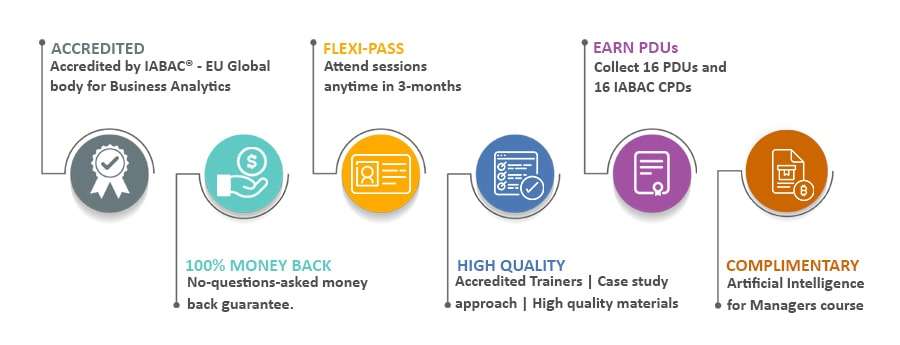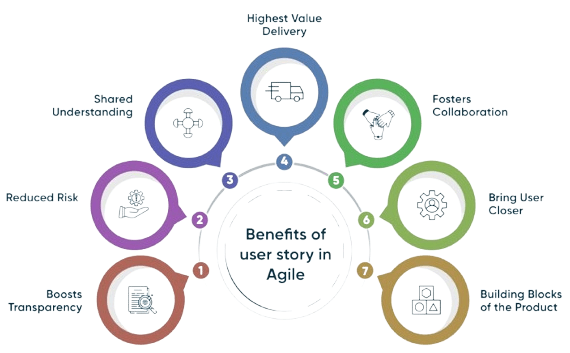
- Introduction to Agile
- BA Role in Agile
- Differences from Traditional BA
- Working in Scrum Teams
- User Stories and Backlogs
- Agile Ceremonies Involvement
- Communication Skills
- Agile Documentation
Introduction to Agile
Agile is a dynamic and collaborative approach to software development and project management that emphasizes flexibility, customer feedback, and iterative progress. Unlike traditional models, Agile encourages adaptive planning and continuous improvement, enabling teams to respond quickly to changing requirements. An Agile Business Analyst plays a crucial role in bridging the gap between stakeholders and development teams, ensuring that business needs are accurately captured and prioritized. As organizations scale Agile practices across teams and departments, frameworks like SAFe (Scaled Agile Framework) provide structured guidance through a SAFe Implementation Roadmap. This roadmap outlines essential steps from Business Analyst Training and team preparation to launching Agile Release Trains and sustaining long-term agility. To support transparency, collaboration, and efficiency in Agile environments, teams rely on a variety of Agile Project Management Tools such as Jira, Trello, and Azure DevOps. These tools help manage backlogs, track sprint progress, and facilitate communication among cross-functional teams. Ultimately, adopting Agile not only improves product quality and customer satisfaction but also fosters a culture of continuous delivery and responsiveness to change, making it a powerful strategy for modern business environments.
Are You Interested in Learning More About Web Developer Certification? Sign Up For Our Business Analyst Online Training Today!
BA Role in Agile
- Collaborating with Scrum Teams: The BA partners with cross-functional Scrum Teams to refine requirements, clarify user stories, and ensure that business objectives are aligned with development activities.
- Facilitating Scrum Sprints: During Scrum Sprints, the BA supports the team by answering questions about requirements, helping prioritize work, and ensuring sprint goals remain business-focused and achievable. What Does a Business Process Analyst Do In this context, the BA plays a crucial role in analyzing business processes, identifying improvement opportunities, and ensuring that the team delivers value aligned with business objectives.
- Participating in Agile Ceremonies: BAs are actively involved in Agile Ceremonies such as Sprint Planning, Daily Stand-ups, Sprint Reviews, and Retrospectives, providing valuable input and ensuring that business priorities are consistently addressed.
In Agile environments, the Business Analyst (BA) plays a pivotal role in ensuring that business needs are clearly understood, well-documented, and effectively communicated to the development team. The BA works closely with Scrum Teams and stakeholders throughout the project lifecycle to support the delivery of valuable and high-quality products. Here’s how a Certified Agile Business Analyst contributes to Agile success:

- Managing the Backlog Scrum: The BA contributes to the Backlog Scrum process by helping groom and prioritize the product backlog, writing clear and testable user stories, and aligning tasks with strategic business goals.
- Ensuring Stakeholder Alignment: Acting as a liaison, the BA ensures that stakeholders’ needs are continuously communicated to the development team and that their feedback is incorporated in an Agile-friendly manner.
- Driving Continuous Improvement: A Certified Agile Business Analyst identifies areas for process improvement and works with teams to adapt Agile practices for better efficiency and value delivery.
- Collaborative Requirement Gathering: The Agile Business Analyst works closely with product owners and developers within Scrum Teams to gather, refine, and clarify user stories in alignment with business goals.
- Supporting Scrum Sprints: Throughout Scrum Sprints, the BA ensures the team has a clear understanding of sprint goals and user stories, providing just-in-time clarification and adapting requirements based on feedback.
- Active in Agile Ceremonies: The BA participates in all key Agile Ceremonies including Sprint Planning, Daily Stand-ups, Sprint Reviews, and Retrospectives to support team focus and facilitate continuous improvement.
- Maintaining the Backlog Scrum: The BA helps manage the Backlog Scrum by grooming and prioritizing the product backlog to reflect changing business priorities and customer needs. The Lead Business Analyst Skills are essential in this process, as the BA must have a strong understanding of business goals, be able to communicate effectively with stakeholders, and prioritize tasks to ensure the team delivers value in line with evolving business requirements.
- Ensuring Business-IT Alignment: Acting as a liaison, the BA ensures that the development team’s output remains aligned with stakeholder expectations and organizational objectives.
- Driving Agile Maturity: A Certified Agile Business Analyst contributes to the team’s Agile maturity by promoting best practices, encouraging feedback loops, and helping to improve overall team performance.
- User Stories Define Value from the User’s Perspective: User stories are short, simple descriptions of a feature told from the perspective of the user. These stories help Scrum Teams stay user-focused and build what truly matters.
- The Product Backlog is a Dynamic Asset: The Backlog Scrum process involves continuously refining the product backlog to reflect changes in business priorities. A well-maintained backlog ensures that high-value tasks are always ready for the next sprint.
- Backlog Grooming is Part of Agile Ceremonies: Agile ceremonies, such as backlog refinement sessions, help the team review and update user stories. This keeps the backlog clean, actionable, and aligned with business goals. As part of Business Analyst Training professionals learn how to effectively facilitate and contribute to these sessions to ensure requirements are clearly defined and prioritized.
- User Stories Drive Scrum Sprints: During Scrum Sprints, teams pull prioritized user stories from the backlog. Well-defined user stories with clear acceptance criteria enable focused, goal-oriented sprints.
- Collaboration Within Scrum Teams is Key: Successful user story creation and backlog management depend on close collaboration among Scrum Teams including developers, testers, and the product owner to ensure stories are feasible and deliverable.
- The Role of a Certified Agile Business Analyst: A Certified Agile Business Analyst plays a crucial role in translating stakeholder needs into effective user stories. They bridge the gap between business and tech, ensuring the backlog reflects real customer value.
Differences from Traditional BA
The role of an Agile Business Analyst differs significantly from that of a traditional Business Analyst, primarily in terms of approach, responsibilities, and collaboration style. In traditional methodologies, BAs often focus on gathering detailed requirements upfront, creating extensive documentation, and handing over requirements to development teams in a linear, phase-based process. In contrast, Agile BAs work in a much more iterative and collaborative manner, engaging closely with stakeholders and development teams throughout the project lifecycle. Rather than finalizing all requirements at the beginning, they continuously refine user stories and adapt to changing needs.With frameworks like SAFe, the SAFe Implementation Roadmap provides a structured path for scaling Agile, where Agile BAs play a critical role in coordinating across teams and value streams. Understanding What Is an Agile Business Analyst is key to recognizing their pivotal role in ensuring that Agile practices align with business needs, facilitating communication, and driving value delivery across the organization. Agile BAs also utilize a wide range of Agile Project Management Tools such as Jira, Confluence, or Rally to manage backlogs, track progress, and facilitate communication in real-time. Their focus shifts from producing static documents to delivering value through working software and customer feedback. This shift requires strong collaboration skills, adaptability, and a clear understanding of Agile principles, enabling Agile Business Analysts to contribute actively to faster delivery cycles, better stakeholder alignment, and more responsive project outcomes.
Are You Preparing for Business Analyst Jobs? Check Out ACTE’s Business Analyst Interview Questions & Answers to Boost Your Preparation!
Working in Scrum Teams
Working in Scrum Teams requires strong collaboration, continuous communication, and a shared commitment to delivering incremental value. A Certified Agile Business Analyst plays a key role in facilitating these efforts by ensuring business needs are clearly understood and effectively communicated within the team. The Agile BA supports team alignment, helps prioritize work, and actively contributes to the delivery process throughout Scrum Sprints.
Are You Considering Pursuing a Master’s Degree in Business Analyst? Enroll For Business Analyst Masters Program Training course Today!
User Stories and Backlogs
In Agile development, user stories and backlogs form the foundation of efficient project delivery. They help teams focus on customer value, maintain clarity in requirements, and prioritize tasks effectively. A well-structured backlog is essential for successful Scrum Sprints and overall project visibility.

Agile Ceremonies Involvement
Agile Ceremonies Involvement is critical for fostering transparency, collaboration, and continuous improvement within Agile teams. These ceremonies, such as daily stand-ups, sprint planning, reviews, and retrospectives, serve as structured opportunities for team alignment and progress evaluation. An Agile Business Analyst plays an integral role in each of these events, ensuring that business needs are clearly communicated, user stories are well-defined, and priorities are aligned with customer expectations. Understanding the Difference Between Business Analyst vs Data Scientist is important in this context, as while a Business Analyst focuses on aligning business requirements with Agile processes, a Data Scientist typically works with data to uncover insights and predict future trends that inform business decisions. In larger frameworks, such as SAFe (Scaled Agile Framework), ceremony involvement becomes even more strategic, aligning with the SAFe Implementation Roadmap to coordinate efforts across multiple teams and stakeholders. The Agile Business Analyst supports this alignment by contributing to PI (Program Increment) planning, facilitating feature prioritization, and ensuring readiness of backlogs at scale. Leveraging Agile Project Management Tools like Jira, Rally, or Azure DevOps enhances visibility and collaboration during ceremonies, enabling real-time tracking of sprint progress, backlog health, and team velocity. These tools also support the documentation of discussions, action items, and decisions made during ceremonies, promoting accountability and transparency. Overall, active and informed participation in Agile ceremonies strengthens team performance and ensures that Agile values and principles are consistently upheld throughout the delivery cycle.
Communication Skills
Communication Skills are fundamental to the success of any Agile environment, enabling clear understanding, effective collaboration, and timely decision-making. In the context of Scrum Sprints, strong communication ensures that everyone on the Scrum Team understands sprint goals, task ownership, and progress. Whether during daily stand-ups, sprint planning, or retrospectives, key Agile ceremonies and clear and concise communication help avoid misunderstandings and keep the team aligned. Additionally, understanding the Top Business Intelligence Tools can enhance the team’s ability to make data-driven decisions, ensuring that Agile initiatives are aligned with real-time business insights and customer needs. A Certified Agile Business Analyst must excel in both verbal and written communication to translate complex business needs into actionable user stories, facilitate stakeholder engagement, and maintain a shared vision across cross-functional teams. Effective communication is also essential for managing the Backlog Scrum process, where priorities shift based on feedback, business value, and changing requirements. Articulating the “why” behind backlog items and ensuring mutual understanding among developers, testers, and product owners helps streamline the development cycle. In distributed teams, communication becomes even more crucial, often relying on digital tools and platforms to maintain alignment and visibility. Overall, strong communication skills are the glue that binds Scrum Teams together, fostering trust, transparency, and high performance throughout the Agile lifecycle.
Are You Interested in Learning More About Business Analyst? Sign Up For Our Business Analyst Online Training Today!
Agile Documentation
Agile Documentation is a key component of the Agile methodology, designed to be lightweight, adaptive, and value-driven, supporting teams without becoming a burden. In the context of Scrum Sprints, documentation serves to capture critical information such as sprint goals, user stories, acceptance criteria, and sprint backlog items. While Agile focuses on working software over comprehensive documentation, key Agile Ceremonies like sprint planning, daily stand-ups, and retrospectives require clear and concise notes to track progress, identify blockers, and plan next steps. A Certified Agile Business Analyst plays a vital role in creating and maintaining documentation that bridges the gap between business stakeholders and Scrum Teams, ensuring user stories are well-defined and aligned with business objectives. Through Business Analyst Training professionals gain the necessary skills and techniques to effectively gather requirements, communicate with stakeholders, and support Agile delivery teams in achieving successful project outcomes. The Backlog Scrum process, where backlog items are prioritized and refined, also relies on documentation to clearly capture evolving requirements and technical specifications. Additionally, Agile documentation often integrates with Agile Project Management Tools such as Jira or Trello, where teams can document tasks, track progress, and maintain a living backlog. Ultimately, the goal of Agile documentation is not to create excessive paperwork but to provide just enough information to keep teams aligned, informed, and focused on delivering customer value efficiently.




